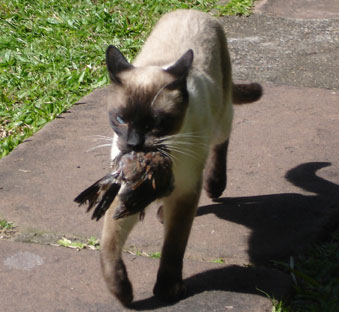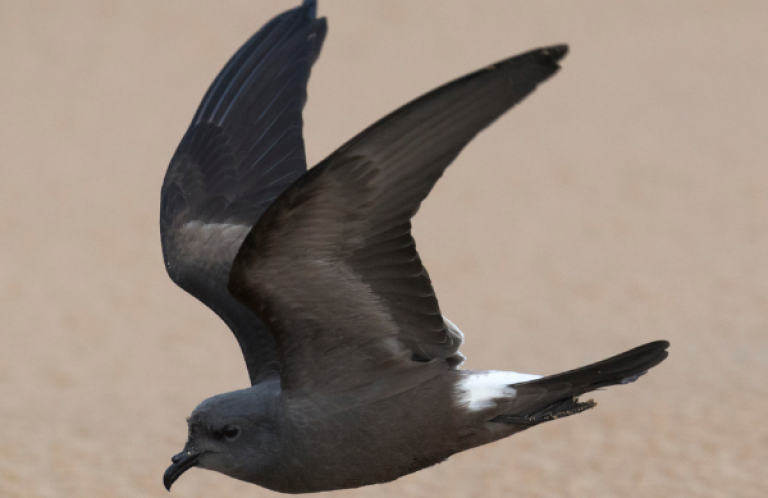New Study Highlights Dramatic Impact of Cats on Young Birds in Washington, D.C. Suburbs
For Immediate Release Contact:
, 202-234-7181 ext. 210
 |
Siamese cat with dead bird, by stock.xchng |
(Washington, D.C., March 14, 2011) A new study on the effects of urbanization on wildlife that tracked the early lives of gray catbirds in three Washington, D.C. suburbs found that outdoor cats were the number one source of known predation on the young birds. The study by Dr. Peter Marra and Dr. Thomas Ryder of The Smithsonian Institution and Ms. Anne L. Balogh of Towson University, published in the January 2011 edition of the Journal of Ornithology, specifically found that almost 80 percent of the catbird mortality in the study was from predation and that cats were the source of almost half of the known predation.
“While this study was not national in scope in any regard, it certainly adds more validation to what we have been saying for years; that outdoor cats are a highly destructive predatory force that is causing havoc in the world of native wildlife. This peer-reviewed study was co-sponsored by one of the most respected scientific organizations in the country – The Smithsonian Institution. I hope we can now stop minimizing and trivializing the impacts that outdoor cats have on the environment, and start addressing the serious problem of cat predation,” said Darin Schroeder, Vice President for Conservation Advocacy for American Bird Conservancy (ABC), the nation's leading bird conservation organization.
“Up to 500 million birds or more are killed by outdoor cats in the United States. We need to get serious about halting the damage that cats are causing to birds and other wildlife species,” Schroeder said.
A key to the study was very small radio transmitters that were affixed to sixty-nine newly hatched gray catbirds in three Washington, DC suburbs – Bethesda, Spring Park, and Opal Daniels. The transmitters recorded the birds' locations every other day until they died or left the study area. Of the 42 birds that died during the study, 33 suffered from predation. Nineteen of the predations were known and of that total, nine were killed by cats.
According to the study, the most significant factor affecting a catbird fledgling's survival was predation and not parental age, brood size, sex, or hatching date. The study revealed that the vast majority of young catbird deaths occurred in the first week after a bird fledged from the nest. Because fledglings beg loudly for food and are not yet alert to predators, they are easy prey for domestic cats.
ABC has been a leader in seeking solutions to the issue of cat predation on birds and has published a variety of materials on the subject that outline approaches to mitigating the problems associated with cat predation. Those materials can be found at https://abcbirds.org/program/cats-indoors/
American Bird Conservancy (www.abcbirds.org) conserves native birds and their habitats throughout the Americas by safeguarding the rarest species, conserving and restoring habitats, and reducing threats while building capacity of the bird conservation movement. ABC is a 501(c)(3) not-for-profit membership organization


















































